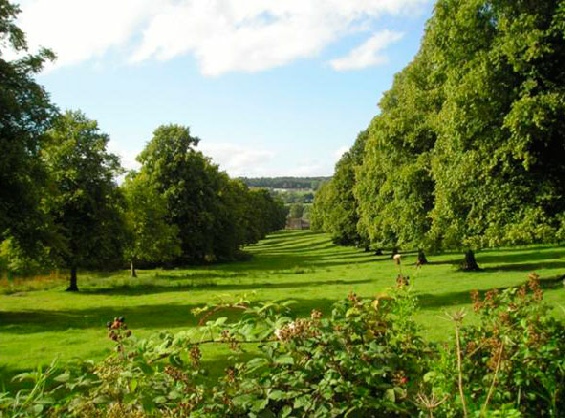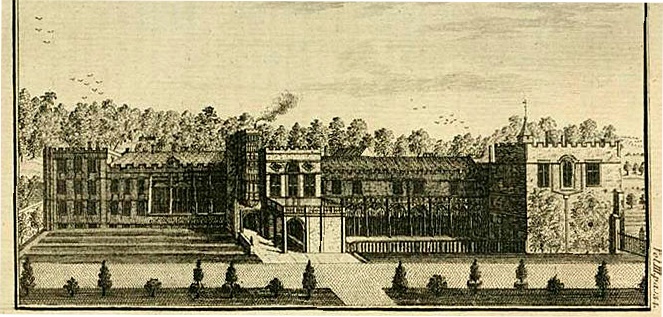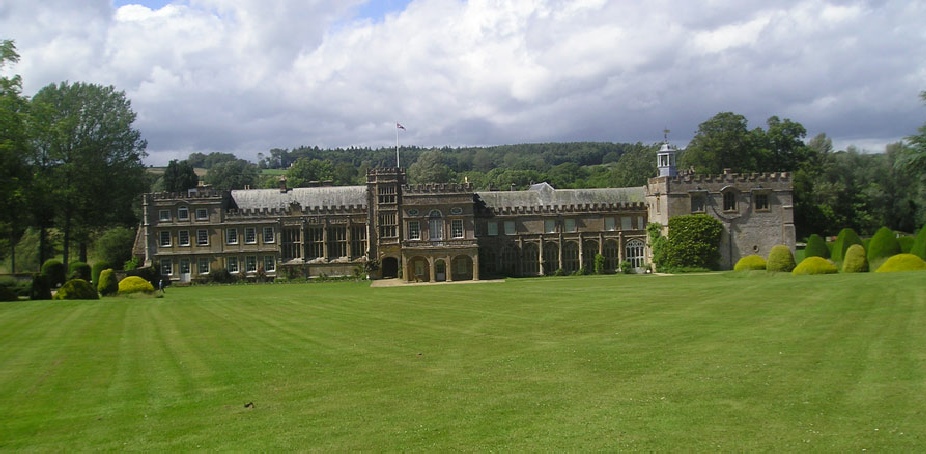THORNCOMBE’S JACOBITES
JACOBITES
The main approach
to Forde Abbey in the 18th century
On Guy Fawkes Night in Axminster in 1714 “a Jacobite High Church rabble from …
Thorncombe rescued effigies of the Pope and Pretender from a bonfire, proclaiming
the latter King of England ” . Jacobites were loyal to the memory of Charles I and
held that the Roman Catholic House of Stuart, were the rightful heirs to the English
throne not the Hanoverians. The story behind the Devon Oath Rolls suggests that
Thorncombe’s gentry if not actively part of the Axminster rabble had leanings in
that direction but swam with the tide when required .
Francis Gwyn of Forde Abbey
Francis Gwyn Esq was married to Edmund Prideaux’s daughter, Margaret who inherited
Forde Abbey in 1702. Gwynn was born the year before Charles I’s execution and
was a member of the Welsh gentry. An MP from 1673, he cut his political teeth in
the Court of James II, father of the Old Pretender. In his capacity as Clerk in Council,
Gwyn attended James II in his Salisbury chambers while the King waited in vain for
military reinforcements to oppose William of Orange’s triumphant progress from Brixham
to London in the ‘Bloodless Revolution’ of 1689. A surviving fragment of Gwyn’s
diary describes James’ agonising last days as King, including the succession of
visitors with news of defections, the king’s nose bleeds and the royal party’s frequent
attendances at chapel .
Gwyn’s impressive social and political connections and his diplomatic skills ensured
his political and personal survival during the unstable period following William
III ’s seizure of the throne and his sister Anne’s subsequent succession. As well
as being rich with estates and properties in Somerset, Dorset, Devon and Wales,
Gwyn was related to Queen Anne’s prime minister Robert Harley by marriage. Nailing
his flag firmly to the Tory mast, he became Queen Anne’s Minister for War, also
enjoying a cordial relationship with the monarch. The Queen died shortly before she
was scheduled to make a private visit to Forde Abbey . A four poster bed made specially
for her visit survives. Mortlake tapestries, now lining the walls of the saloon
were confiscated from Edmund Prideaux following accusations of high treason during
the Monmouth Rebellion, were presented to Gwyn by Queen Anne as a sign of his trustworthiness.

Forde
Abbey as Francis Gwyn may have known it.
Taken from A description of England and Wales containing
a particular Account of each County, Vol. III published in 1769,
The majority of country Tories of whom Gwyn was one, were still covertly for
the restoration of the Old Pretender. But support “rarely amounted to more than
drinking toast to ‘the king across the water’ ”, which perhaps accounts for why
Gwyn signed each of the 1715 and 1719 Oath rolls. Discretion being the better part
of valour, suffice to say Francis Gwyn Esq was appointed Father of the House of
Commons at the end of George I’s reign.
Thomas Cook, Clerk of Thorncombe
There is strong evidence to suggest that Thorncombe parish priest Thomas Cook was
also a Jacobite. He appears to have wrestled with his conscience before taking the
1723 loyalty oath. As magistrates Francis Gwyn and William Bragge of Sadborow were
legally obliged to sign the rolls for the earlier 1719 Oath or face accusations
of being papists. The oath included a declaration against transubstantiation but
significantly Cooke who was also legally required to take the oath, as a parish priest,
did not, although he eventually signed the 1723 Oath. Married to the daughter of
a cleric from Wells, he was a “non juror”, one of 400 priests and bishops which
included Bishop Ken of Wells, who refused to take the 1689 Association Oath on the
grounds that William III’s succession was not validated by divine right. This led
to a schism in the Church of England, loss of livings and persecution. Gwyn was MP
for Wells so may have been instrumental in Cooke’s appointment which signifies his
Jacobite sympathies. Given Thorncombe’s incumbency was in the gift of Sadborow, this
also implicates William Bragge Esq as a supporter of the Jacobite cause as he granted
Thomas Cooke the living at Thorncombe in 1702.
For a more detailed account, references and a bibliography go to:
http://www.foda.org.uk/main/projects/eighteenthcentury/thorncombe/quakers.htm
EVE HIGGS
August 2011




 JACOBITES
JACOBITES